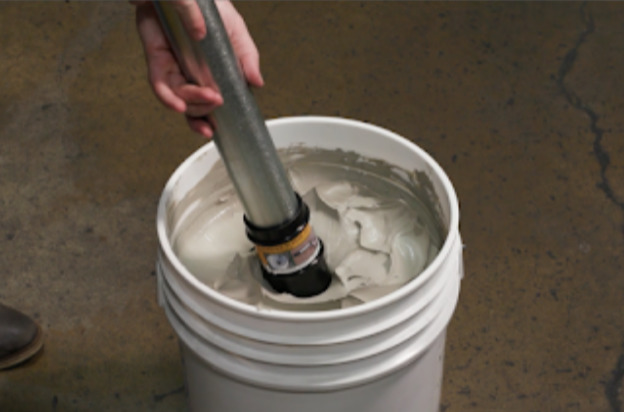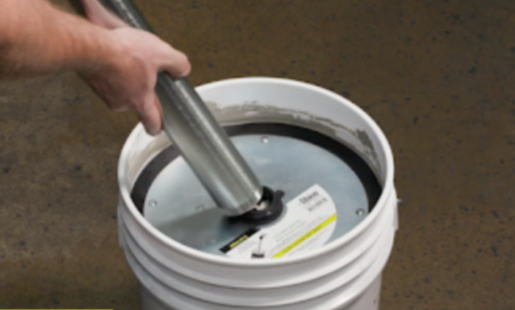How To Load a Bulk Caulk Gun
Many people who pick up a bulk gun for the first time get frustrated. Why? Because it is messy and it requires some practice. So, what are the keys to successful bulk caulk loading and dispensing?

1. Work to keep the process clean: Always have solvent and rags handy to clean the gun. Generally, the material manufacturers publish their solvent recommendation for clean up in their Spec Data or Technical Data Sheet (TDS).
2. Don’t try to load the gun through the nozzle, unless it is a thin self-leveling sealant. Always remove the nozzle and cap. Load with the open barrel end of the tool.
3. Always make sure your tool is producing an adequate vacuum. Quick test: Place your palm flat across the front of the barrel and pull the rod back. Your palm should seal against the barrel and you should feel a strong pull. To insure proper vacuum we recommend that:
- The inside of the barrel be clean of all sealant film and lightly oiled. With our steel barrel tools you can clean out the inside of the barrel with our 800-G01 Barrel Brush. Don’t use a wire brush on Teflon® coated barrels. With Teflon® coated barrels simply add solvents to the inside of the barrel and flush out with the piston – run it up and down the barrel briskly. Wet or hardened sealant should peel off. Same with aluminum barrel guns; No brass bristle brushing.
- The pistons can be cleaned and not damaged. Our bulk tools are built with leather pistons. Take the pistons out, clean them with solvent and soak them in standard automotive motor oil. Leather pistons are just like our skin, they will dry out when exposed to solvents (including water!) so “moisturize” them in oil like you do with hand lotion until they become soft and flexible. Once the pistons are saturated and clean, reload them into the tool. Some tools have synthetic (Teflon or plastic) pistons, with those all you can do is make sure the edges are not damaged. See our instructional Video “How to maintain and repair Albion bulk & sausage guns”
4. Prep the pail: Many (Poly)Urethane & Silicone sealants are moisture curing. They react with moisture in the air to cure to a rubbery state. What happens then is during the time your pail is open to the atmosphere the top surface of the material can cure or skin over. Use a Follow Plate or Skim Plate to reduce the air exposure. When placing a plate on the sealant start with an edge, press it down into the sealant and carefully flatten the plate on the sealant. What you want to do is purge all the air out from between the follow plate and the sealant.
5. Loading the tool: There are several popular techniques for filling the gun. Direct loading, using an Albion 33-10 Loading Sleeve (with or without a Skim Plate) or a Follow Plate. I will touch on each process. See our instructional Videos “How to use Slip-on Follow Plates” or “How to Load a Bulk Gun”.


- Direct Loading: This is how most professionals load their tools. First apply a bond breaker (solvent, WD-40, cooking spray, etc.) to the threads on the barrel end to make cleanup easier. Then plunge the end of the barrel into the sealant a good inch, making sure the sealant is contacting all the way around the sides of the barrel. Then you pull the rod back gently and you feel the vacuum pull the sealant into the barrel. Develop a feel for the resistance as you pull the rod back. Watch out for air getting past the barrel and into the gun. Sink the barrel deeper into the pail as the material level drops. Once the gun is loaded, pull the barrel out and wipe the barrel clean before placing the cap on the barrel.
- 33-10 Loading Sleeve: By using a loading sleeve, you cover the barrel surface with the sleeve and keep the mess on the sleeve. This surely helps keep the gun clean and speeds up the process.
- Follow Plate: You should consider use a follow plate with Silicone based material as explained above. To load the gun, you place the gun onto the gasket of the follow plate. Now the follow plate and gun are one, push down with the gun and pull the rod back. This pushes and pulls the material up into the gun. See our instructional Video “How to use Slip-on Follow Plates”